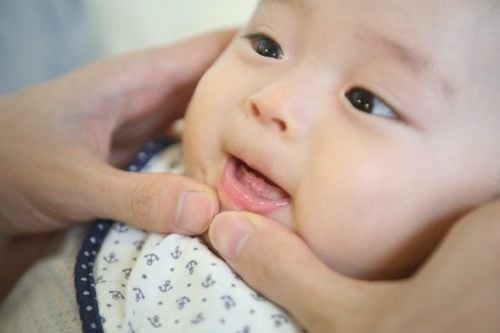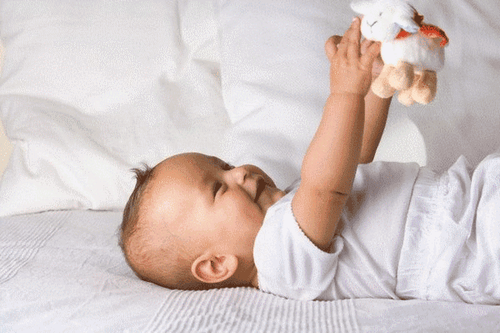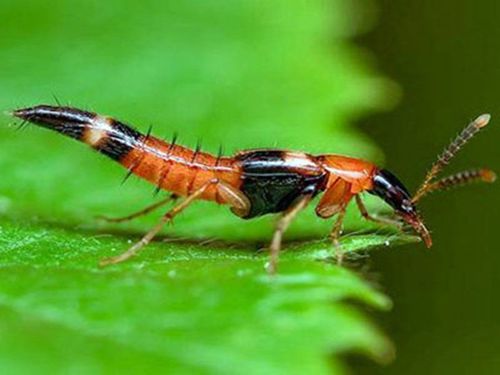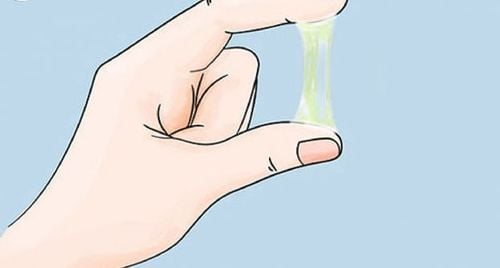This is an automatically translated article.
When a child is stung by a bee or wasp, parents need to remove the stinger as soon as possible and apply ice. Although serious allergic reactions are rare, parents need to be on the lookout for large bee stings and other unusual signs.
1. Handling when a child is stung by a bee
The venom of bees and wasps (wasps) works like an automatic pump, meaning that the longer it stays in the body, the more venom is released. Therefore, you need to act quickly when your child is stung by a bee by removing the stinger as quickly as possible by following these steps:
Find a small black dot in the center of the reddened area and scrape it off with a fingernail or a hard ATM card clean. Do not squeeze the stinger with your fingers or pull it out with tweezers as this may cause more venom to be released. Once the stinger has been removed, wash the stung area with soap and clean water. Elevate the bitten area, e.g. raise an arm or leg, to reduce swelling. Apply an ice pack for 15 minutes to reduce swelling and pain. Apply a paste of baking soda and water to soothe the area and draw out the venom. To relieve pain, you can give your child acetaminophen or ibuprofen. If your baby is really upset and is over 6 months old, your doctor may recommend an over-the-counter antihistamine for children to help reduce itching and swelling. The pain usually goes away after a few hours, but the swelling is likely to increase for another 1-2 days. During this time, continue applying ice if the child agrees.
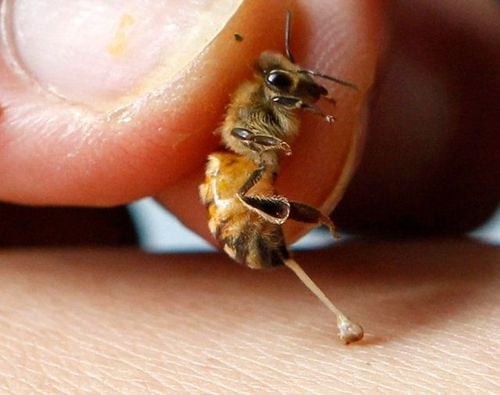
Cách lấy nọc độc của ong cần thực hiện theo đúng kỹ thuật
2. When to see a doctor when a child is stung by a bee?
The child needs to be checked out in the hospital in the following cases:
The child has been stung by bees many times: Multiple stings can be dangerous, even if the child does not have an allergic reaction. Venom from multiple stings can cause vomiting, diarrhea, headache, and fever. Stings in a child's mouth: Can cause dangerous swelling and block airways. Therefore, you need to take your baby to see a doctor immediately. The area that was stung by the bee gets bigger after 2 days, or if the swelling spreads from the hand/foot to the wrist/ankle, even if the baby was stung only once. The area where your child was burned has red streaks, yellow discharge, or is getting redder. Your doctor may prescribe antibiotics to fight the infection.
3. Are children stung by bees dangerous?
Answering the question "Does the child have a fever when stung by a honey bee?", doctors said that honey bees usually only cause pain at the sting, not life-threatening. Meanwhile, species such as wasps, ground bees, wasps (wasps), wasps ... are more dangerous, can cause multi-organ failure after being stung. In our country, these are all common bee species and have the ability to sting people. If the exact species of bee that attacked the child and the right first aid is determined, the victim will avoid danger.
In rare cases, some children will have a severe allergic reaction to the sting. This is called anaphylaxis and can be life-threatening. Call 911 immediately if, within minutes or hours of the sting, you notice these signs of an allergic reaction:
Swelling of the skin, lips, throat, tongue, or face Wheezing or other problems severe breathing Fast or weak pulse, or irregular heartbeat Hives Dizziness, fainting, loss of consciousness Nausea, vomiting, stomach cramps, diarrhea Pale, pale or sweaty skin Confusion , stutter.
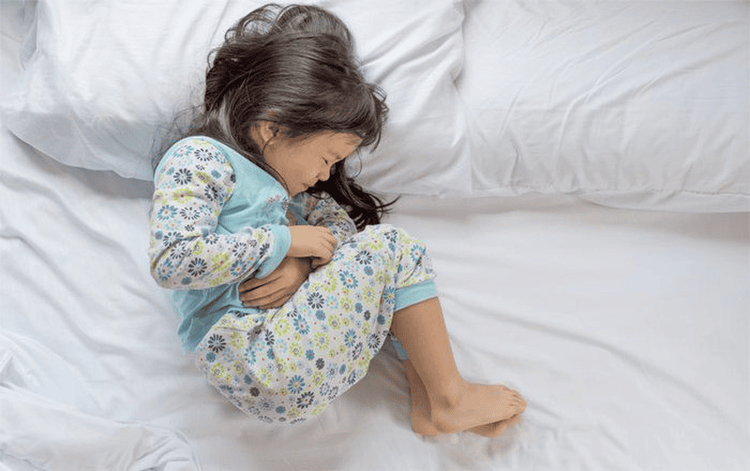
Sau khi bị ong đốt trẻ có thể xuất hiện tình trạng đau quặn bụng
4. Preventing children from being stung by bees
Conventional insect repellents are not able to protect children from wasps and wasps. But to minimize the risk of your baby getting stung by a bee, you can do a few things:
Do not use soap and perfumed cosmetics on your body as the scent will attract bees. Wear light, plain (non-patterned) clothing. Dark, light or floral printed clothing will attract bees. Make sure children wear shoes when playing outdoors to avoid stepping on bees and getting stung. Be especially vigilant when you are near blooming flowers or orchards that attract bees. Teach your kids not to catch, tease, and bees, and run away when they see them instead (they don't usually fly very quickly.) Cover your plate of food when you're out and about. Repair holes and holes in windows and doors at home. Consider using netting around your baby's crib or bed if there are bees or wasps in the house. You can also use a mesh cover over your baby's seat, backpack or stroller when you're taking your baby outdoors during insect-heavy seasons. Destroy the beehives and wasps around your house. Finally, adults must give specific instructions to children about bees and wasps, their nests and the dangers of being stung, especially when it will be very painful, so that children can proactively have a sense of prevention. In the process of monitoring children who have been stung by bees for allergies, it is necessary to go to a medical facility immediately if they detect that the child has abnormal signs, has many swollen and widespread stings,...
Pediatrics department at Vinmec International General Hospital is the address for receiving and examining diseases that infants and young children are susceptible to: viral fever, bacterial fever, otitis media, pneumonia in children, .... With modern equipment, sterile space, minimizing the impact as well as the risk of disease spread. Along with that is the dedication from the doctors with professional experience with pediatric patients, making the examination no longer a concern of the parents.
If you have a need for consultation and examination at Vinmec Hospitals under the nationwide health system, please book an appointment on the website for service.
Please dial HOTLINE for more information or register for an appointment HERE. Download MyVinmec app to make appointments faster and to manage your bookings easily.
Reference source: babycenter.com




